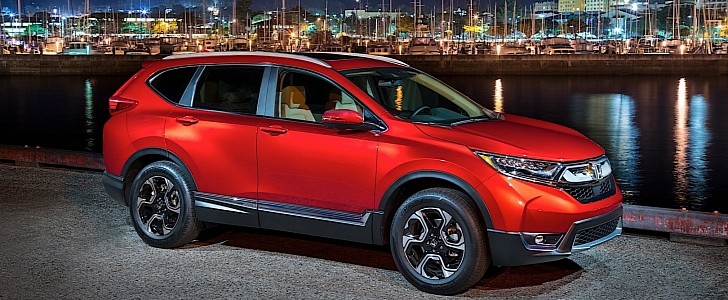No carmaker is safe from making mistakes and no technology is perfect - this is something we’ve learned oh so many times. One week ago Tesla got on NHTSA’s radar for what they called “phantom braking.” This week is Honda’s turn to attract attention for the same reason: the vehicles would brake for no reason, even when driving at highway speed.
According to NHTSA, a preliminary evaluation has been opened to investigate 278 complaints alleging “inadvertent activation of the collision mitigation braking system.” Most of them (171) came from Honda CR-V owners, with the rest being filed by Accord owners. The investigation covers around 1.73 million Honda vehicles – 2018-19 Honda Accord midsize cars and 2017-19 Honda CR-V compact crossovers.
“The complaints allege braking incidents, some with large speed changes, occurring with nothing obstructing the vehicle’s path of travel,” shows a document posted on the NHTSA website. Six of the 278 complaints allege that inadvertent braking incidents resulted in collisions with minor injuries.
“Twice in the past six months, driving down our rural road to our neighborhood, the car flashed the ‘brake’ sign on the dash and applied the brakes,” one complaint reads according to Automotive News. “After touching the brake pedal, the car returned to its normal speed. The road was clear, with no obstructions, no cars in front or cars coming [from] the other direction.”
A preliminary evaluation is not exactly an investigation, but in most cases is the step preceding the full investigation. At this phase, NHTSA gathers information from the manufacturer including data on complaints, injuries, and warranty claims. It is also where the manufacturer can express its view regarding the alleged problem and may issue a recall. After the evaluation, NHTSA can either close the investigation or move to send a “recall request” to the carmaker in case the problem is safety-related.
A similar preliminary evaluation was opened last week into Tesla Model 3 and Model Y units made in 2021 or 2022, again for unintended braking incidents. According to the NHTSA report, 416,000 vehicles are affected.
“The complaints allege braking incidents, some with large speed changes, occurring with nothing obstructing the vehicle’s path of travel,” shows a document posted on the NHTSA website. Six of the 278 complaints allege that inadvertent braking incidents resulted in collisions with minor injuries.
“Twice in the past six months, driving down our rural road to our neighborhood, the car flashed the ‘brake’ sign on the dash and applied the brakes,” one complaint reads according to Automotive News. “After touching the brake pedal, the car returned to its normal speed. The road was clear, with no obstructions, no cars in front or cars coming [from] the other direction.”
A preliminary evaluation is not exactly an investigation, but in most cases is the step preceding the full investigation. At this phase, NHTSA gathers information from the manufacturer including data on complaints, injuries, and warranty claims. It is also where the manufacturer can express its view regarding the alleged problem and may issue a recall. After the evaluation, NHTSA can either close the investigation or move to send a “recall request” to the carmaker in case the problem is safety-related.
A similar preliminary evaluation was opened last week into Tesla Model 3 and Model Y units made in 2021 or 2022, again for unintended braking incidents. According to the NHTSA report, 416,000 vehicles are affected.






